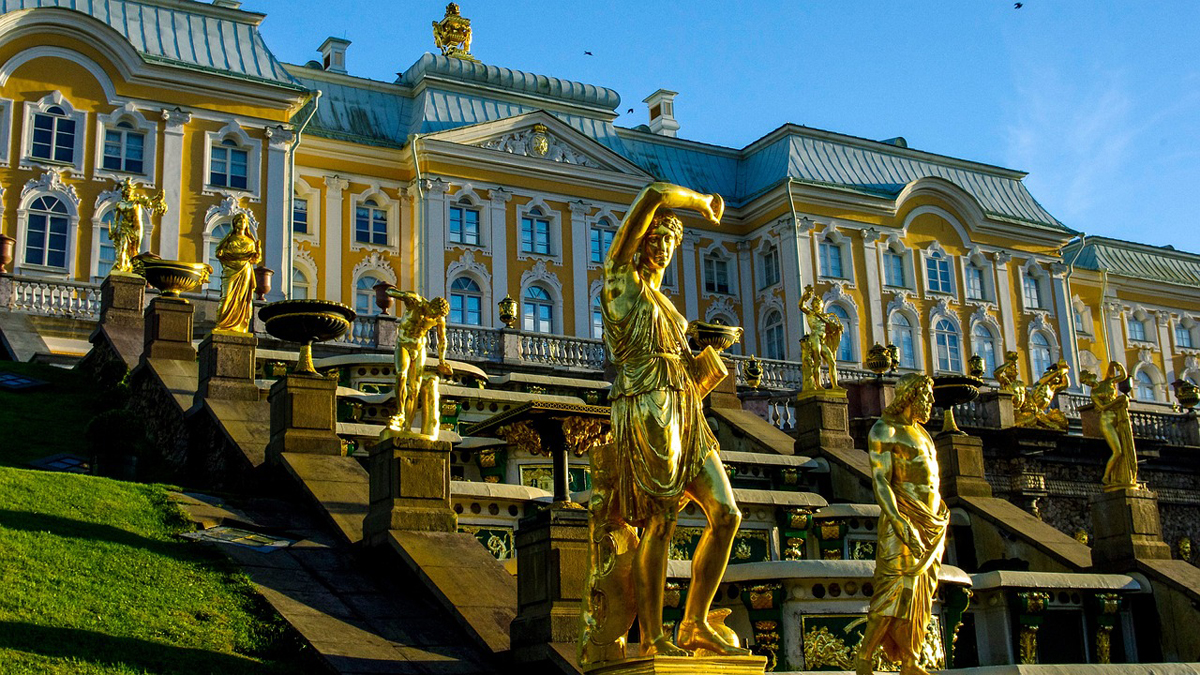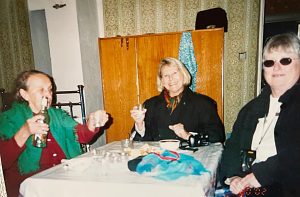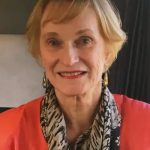Is there any going back from Putin’s Russia?

Editor’s note: This is the conclusion of a two-part series in which the author reflects on trips to Israel and Russia before the current wars broke out. Her original blog was cut to fit the Pioneer’s needs.
(Sept. 12, 2024) — I had a romanticized view of Russia when I was in college. I took an entire semester of Russian literature – reading wonderful novels including “Fathers and Sons” by Ivan Turgenev, “Crime and Punishment” by Fyodor Dostoevsky, “And Quiet Flows the Don” by Mikhail Aleksandrovich Sholokhov and, yes, “War and Peace,” by Leo Tolstoy.
But I could never go to Russia because the Iron Curtin had fallen after World War II. What was behind it was a mystery. After the Berlin Wall had come down and the Cold War had ended, the Iron Curtin cracked open and I was ready to go.
My sister Jean and friends Kathy and Ramona embarked with me on the MS Tolstoy in St. Petersburg for a river trip to Moscow in 2002. The wonders of Old Russia lay before us: the Hall of Mirrors among the gilded carvings of Catherine the Great’s Palace and the Hermitage, which houses the world’s largest art collection located in Catherine’s Winter Palace. We marveled at gold statues surrounding the fountains at Peter the Great’s summer home.
A study in contrasts

Our next stop was Svir Stroy. When we disembarked for this little town, our tour guide told us that we might be invited into the homes of some of the residents. Under communism, the government took care of the people with pensions. But with the fall of the Soviet Union, they no longer had a guaranteed income and had to find ways to support themselves.
At the home of a 75-year-old widow, we gulped down homemade “hootch” and looked at photos of her dead soldier husband. After we paid her for the visit, she cut zinnias from her garden for us.
In contrast to our stop in Svir Story, we visited opulent carvings in monasteries and cathedrals as our ship moved toward Moscow along Russia’s, and Europe’s, longest river, “Mother Volga.” Gone were widows pouring vodka or babushkas selling wildflowers in the parks.
Where once religion had been repressed during communism, nuns and monks sang to us among frescos of saints. Beautifully tiled subway stations in Moscow featured mosaics of rural scenes because Soviet leader Joseph Stalin wanted the metro stations to be the people’s palaces.
Once inside the Kremlin’s State Armory in Moscow, the wealth of Russian princes and tsars was on display with gold-encrusted carriages, dazzling Faberge eggs and heavily brocaded gowns.
The rise of Putin
But Russia has changed. Today, it is on the U.S. State Department’s Do Not Travel advisory. The immediate reason for the change is the war Russia is waging to control Ukraine. But my answer precedes this war. I link it to the rise of Putin.
When the tsars were overthrown in the 1917 Russian Revolution, the central command of the successor Union of Soviet Socialist Republics (USSR) ruled the economy. After 70 years of authoritarianism, the transition to a market economy after the Iron Curtin fell in 1991 was chaotic. My story of the widow in Svir Stroy illustrates the impact on individuals in Russia.
Boris Yeltsin was Russia’s first president as Russia moved from communism toward democratization. But Russia was unprepared for the change. Chaos and a failing economy ensued.
Russians felt more secure when Yeltsin chose Vladimir Putin as his prime minister. According to Britannica, “After years of Yeltsin’s unpredictable behaviour, the upsurge in violent crime, and the decline in both living standards and Russia’s prestige abroad, Russians were ready for a leader with an agenda and the mental capacity to implement it. The reforms implemented by Putin – as well as his demeanour – produced political stability and economic vitality not seen in the country during the 1990s and gave Russia a sense of confidence as it entered the 21st century.”
Putin’s need for more territory
Rapid change often makes people look to an autocratic leader. People long for security, even if it’s a return to centralized control under Putin. His 2020 modification of the Russian constitution removing term limits allows Putin to remain in office for a fifth term and potentially beyond, tightening his grip over Russia.
He has talked of Novorossiya, or New Russia, underlining his longing for the return of territory that existed under the tsarist empire. New Russia includes his takeover of Crimea and the current war to incorporate Ukraine.
The United States and the Europeans have responded with harsh economic sanctions. Former Russian President Dmitry Medvedev warned that “there will be hell to pay” for the increased sanctions. The result of Russia’s revenge may be increased abductions of Europeans and Americans on false charges or on minor infractions, such as basketball star Brittney Griner’s arrest for vape cartridges containing cannabis oil.
Is there a way forward?
Ukrainian President Volodymyr Zelenskyy hosted a peace conference in Switzerland in June, but Russia was not invited. The final document, signed by 78 mostly Western countries, calls for “respect for territorial integrity and sovereignty.”
Russia continues to demand that Crimea and the Donetsk region never be returned to Ukraine, which is a non-starter for Ukraine. Despite these rigid positions, reported sources in both countries have broadcast messages about a ceasefire and opening talks again.
In 2022, representatives of both countries met in Istanbul. Parameters of a deal were drawn, but it ultimately failed.
Zelenskyy is planning a second peace conference, with hopes that it can occur while President Joe Biden is still in office. A July survey found that 44% of Ukrainian civilians favor starting talks with Russia and a third would agree to cede some territory to Russia to end the war.
According to the sources I’ve read, neither side is ready to come to agreement. But international pressure, exhaustion of the Ukrainian people and rebelliousness of young Russian men to serve in Putin’s war give me hope that a solution will occur.
Taking the long view
We humans are prone to hubris. We think that what we experience is the reality. Travel can soften our self-centeredness. I saw the fragility of the peace I was experiencing in Israel when I looked at the area of unexploded land mines in the Golan Heights. I learned the tenuous effects of moving from communism to the capitalism in Russia when I visited the elderly woman in Svir Story.
But it would be hubris to think that I really know these countries because I saw them as a tourist. Harkening back to Harry Styles’ lyrics, what I experienced when I was in these two countries “is not the same as it was” today.
When Israel invaded Egypt during the 1956 Suez crisis, the United States joined Russia at the United Nation to force Israel to withdraw. Now we are Israel’s strongest ally.
During World War II, Russia was our military ally. Now we are political and military enemies.
It’s not the same as it was.
What’s happening today is not the future. We can’t know whether to fear or to hope for changes that will happen in Israel and Russia. I can only choose hope.
Read Part 1: Hard to believe Israel will ever be as it once was.

Gail Murray
Gail Murray served in Walnut Creek as Mayor and city councilmember for 10 years. From 2004-2016 she served as District 1 Director, Board of Directors of the San Francisco Bay Area Rapid Transit District (BART). She is the author of "Lessons from the Hot Seat: Governing at the Local and Regional Level."
